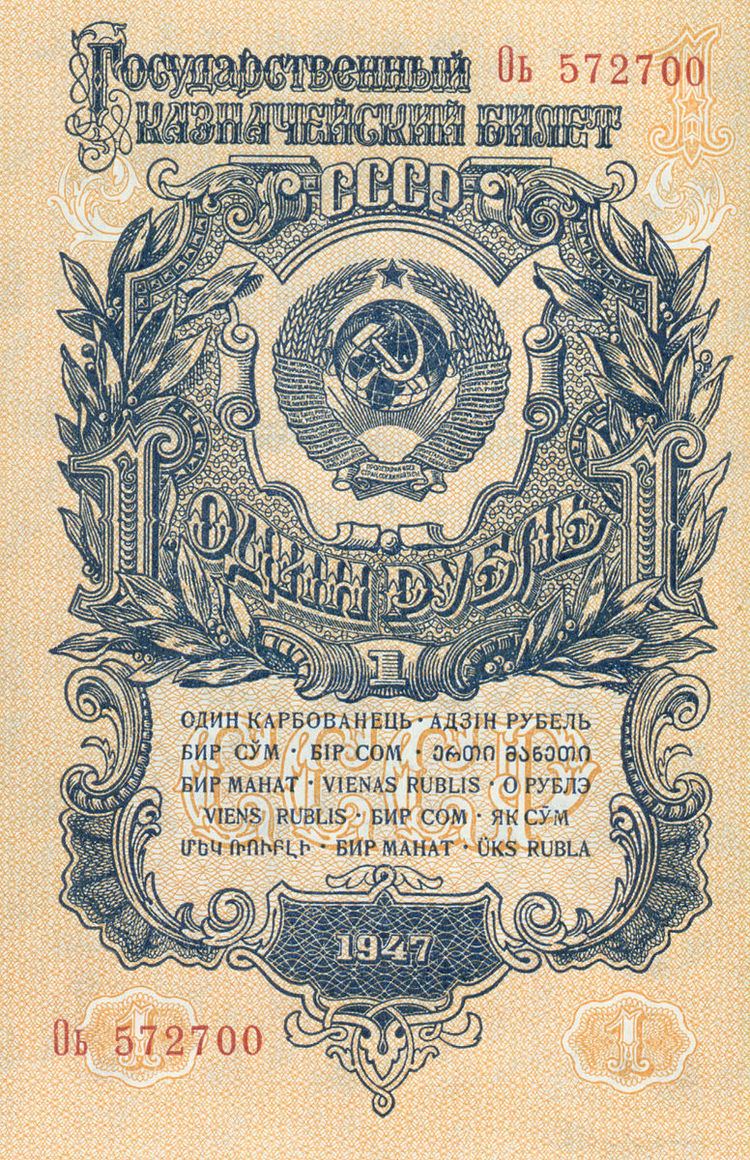 | ||
The monetary reform in the Soviet Union of 1947 (known as the "postwar reform") was carried out during December 16-19, 1947. It was the second Soviet monetary reform. At the same time the post-World War II rationing system was discontinued. The reform was a combination of denomination and confiscation, the latter depending on the amount exchanged and whether the monies were kept at sberkassa or not. State bonds were exchanged as well, under more favorable rules of denomination. The confiscative character was attributed to large amounts of counterfeit money produced by Nazi Germany, as well as to the desire to devalue the savings of the profiteers.
References
Monetary reform in the Soviet Union, 1947 Wikipedia(Text) CC BY-SA
